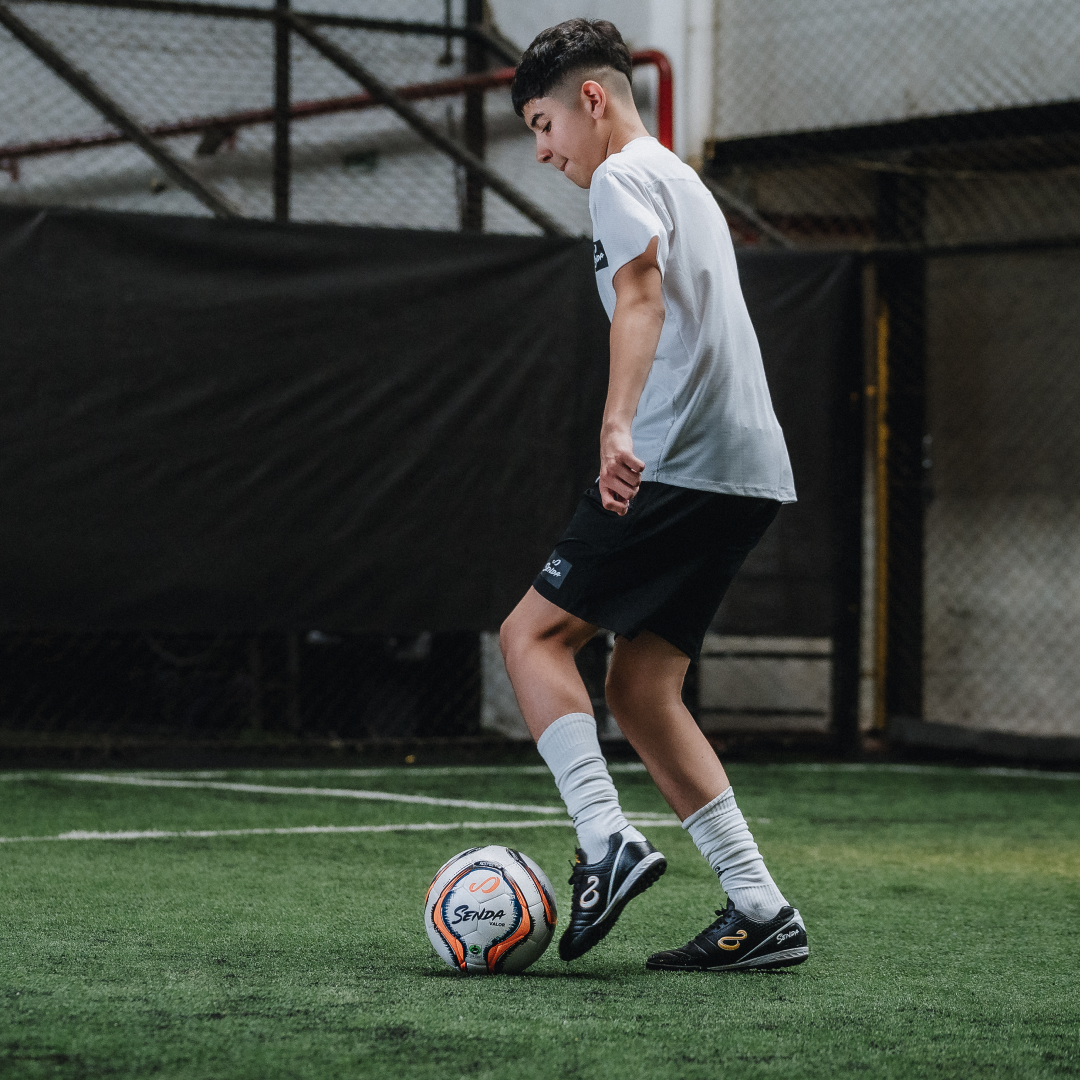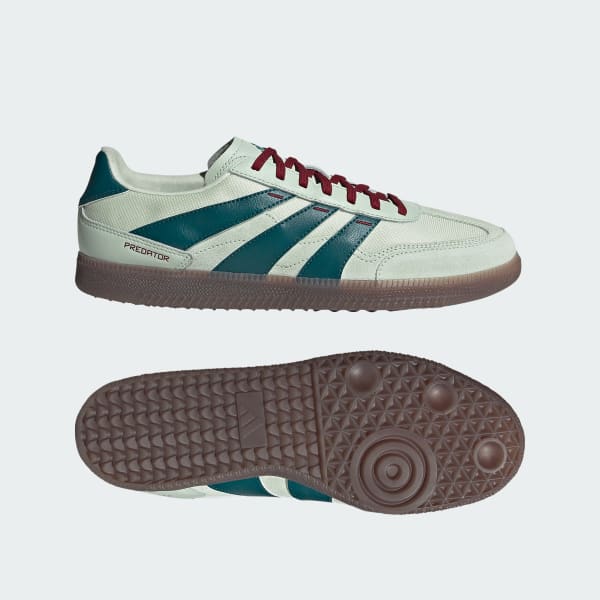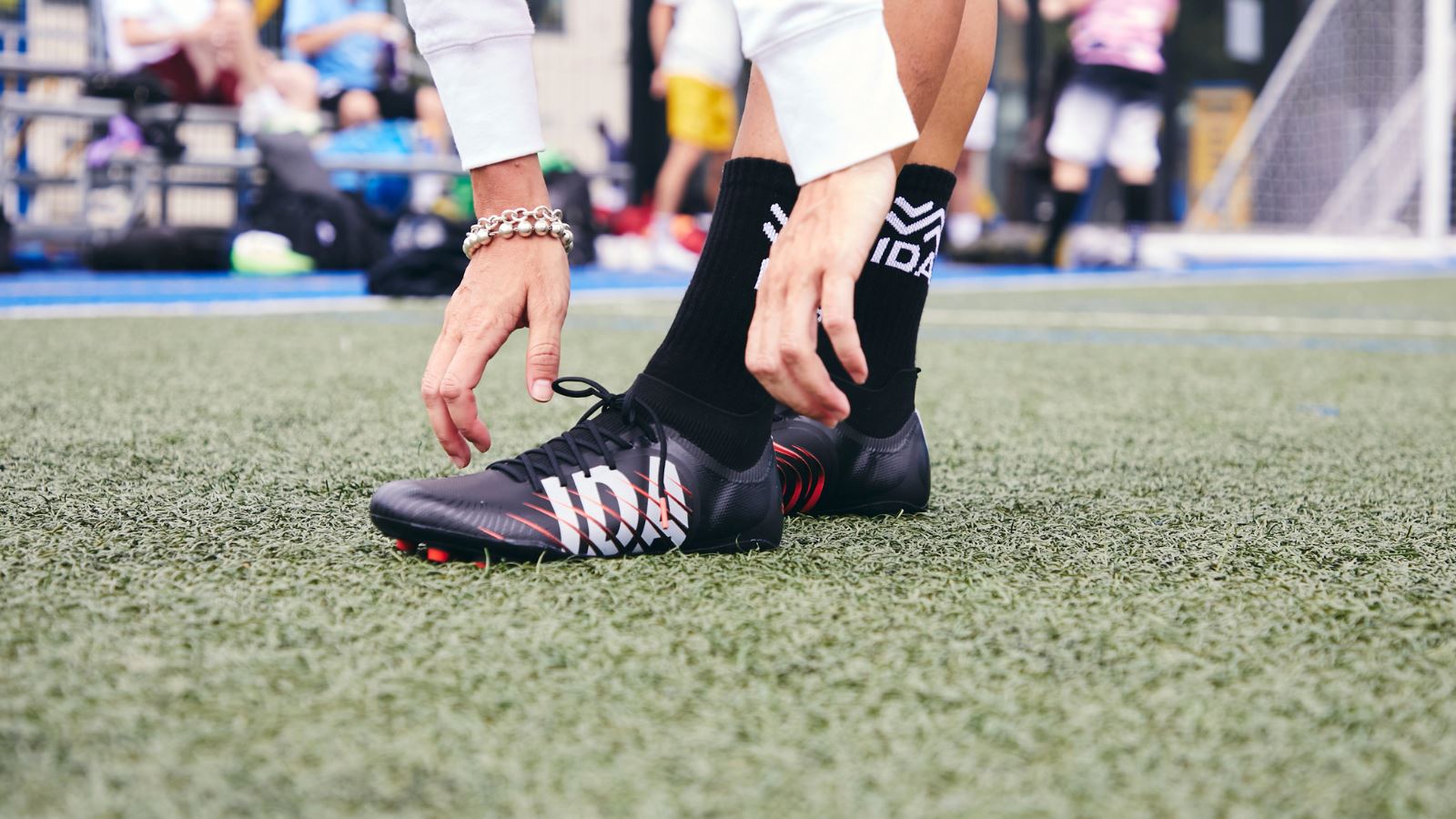No, running shoes are not ideal for indoor soccer. They lack the proper grip and support.
Indoor soccer requires specific footwear. Running shoes are designed for forward motion and cushioning. Indoor soccer shoes, on the other hand, provide better traction and lateral support. Wearing the right shoes can improve performance and prevent injuries. It’s important to understand the differences to make an informed decision.
This guide will explain why choosing the right shoes matters and how it can impact your game. Keep reading to learn why indoor soccer shoes are the best choice for the sport.
Running Shoes Vs. Indoor Soccer Shoes
When engaging in indoor soccer, the right footwear is crucial for performance and safety. Many athletes wonder if they can use their running shoes for indoor soccer. Let’s explore the key differences between running shoes and indoor soccer shoes.
Key Differences
Running shoes and indoor soccer shoes have distinct features. Understanding these differences helps you make an informed decision.
| Feature | Running Shoes | Indoor Soccer Shoes |
|---|---|---|
| Sole Design | Cushioned for shock absorption | Flat, non-marking for grip on indoor surfaces |
| Weight | Heavier | Lighter |
| Support | High arch support | Minimal arch support |
| Flexibility | Less flexible | Highly flexible |
Performance Impact
Using the right shoes can significantly impact your performance on the field.
- Traction: Indoor soccer shoes provide better traction, preventing slips.
- Agility: They offer better agility due to their lightweight design.
- Control: Enhanced control over the ball is due to their flexible sole.
Running shoes, designed for forward motion, might hinder quick direction changes. Their cushioning affects your balance and stability during intense play. Hence, it is crucial to choose the appropriate footwear for the sport.
Grip And Traction
When playing indoor soccer, grip and traction are crucial. The right shoes can make a big difference in your performance. One common question is whether running shoes can be used for indoor soccer. Let’s explore the grip and traction aspects to see if running shoes are suitable.
Surface Compatibility
Indoor soccer is usually played on hard surfaces like gym floors or turf. These surfaces need shoes that provide good grip. Running shoes are designed for outdoor use. They have soles made for concrete or pavement. Indoor soccer needs shoes with different tread patterns. The grip on running shoes might not work well on indoor surfaces.
Risk Of Slipping
Using running shoes for indoor soccer can increase the risk of slipping. Running shoes often have deep grooves. These grooves can cause you to slide on smooth indoor floors. Indoor soccer shoes have flat, rubber soles. This design helps maintain grip and reduces the risk of slipping.
Slipping can lead to injuries. It’s important to have the right footwear to keep you safe. Wearing the right shoes can enhance your performance and protect you from falls.
Comfort And Support
When playing indoor soccer, comfort and support are essential for performance. Running shoes are designed for forward motion. Indoor soccer involves multi-directional movements. This difference raises the question: Can running shoes provide the necessary comfort and support for indoor soccer?
Arch Support
Running shoes often have good arch support. This is beneficial for running activities. But indoor soccer requires more lateral movement. Running shoes may not provide enough lateral stability. This can lead to discomfort or even injuries.
Cushioning
Running shoes have ample cushioning. This is great for absorbing impact during runs. Indoor soccer involves sharp turns and quick stops. Too much cushioning can make it harder to change direction quickly. The extra cushioning can also reduce the feel of the ball.
In summary, while running shoes offer comfort and support for running, they may fall short for indoor soccer due to lack of lateral support and excessive cushioning. Choosing the right footwear is crucial for an enjoyable and safe indoor soccer experience.

Credit: sendaathletics.com
Injury Prevention
Playing indoor soccer can be tough on your body. Wearing the right shoes can help reduce the risk of injuries. Running shoes might seem comfortable, but they are not made for indoor soccer. They lack the necessary support and protection. Let’s dive into the details.
Ankle Stability
Indoor soccer involves a lot of quick turns and sudden stops. These movements put stress on your ankles. Running shoes are designed for forward motion, not for side-to-side movements. This can lead to ankle injuries.
- Running shoes have a higher heel. This can cause instability.
- They lack lateral support. This increases the risk of rolling your ankle.
- Soccer shoes are low to the ground. They offer better ankle stability.
Foot Protection
In indoor soccer, your feet are constantly in contact with the ball and the hard surface. Proper foot protection is essential. Running shoes do not provide the same level of protection as indoor soccer shoes.
| Feature | Running Shoes | Indoor Soccer Shoes |
|---|---|---|
| Sole Thickness | Thicker | Thinner |
| Material | Mesh | Leather or Synthetic |
| Toe Protection | Minimal | Reinforced |
Running shoes have thicker soles. This can make it harder to control the ball. They are often made of mesh, which does not protect your feet from kicks and impacts. Indoor soccer shoes have thinner soles and are usually made of tougher materials. This provides better control and protection.
In summary, wearing running shoes for indoor soccer can increase the risk of injury. Choosing the right footwear is crucial for your safety and performance.
Durability And Wear
Running shoes and indoor soccer shoes serve different purposes. Understanding their durability and wear can help decide if running shoes are suitable for indoor soccer. Let’s explore some key factors below.
Sole Longevity
Running shoes have soles designed for outdoor surfaces. These soles are built to endure hard pavements and uneven terrain. Indoor soccer courts, however, have smooth and flat surfaces. Running shoe soles may wear out faster on these surfaces. The tread pattern on running shoes may not grip well on indoor courts. This can lead to slipping and reduced performance.
Material Wear
The materials used in running shoes differ from those in indoor soccer shoes. Running shoes are made with lightweight, breathable materials for long-distance comfort. Indoor soccer shoes use sturdier materials to withstand quick movements and contact with the ball. The upper part of running shoes may tear or stretch with the intense play of indoor soccer. This can affect the shoe’s fit and overall comfort.

Credit: www.adidas.com
Performance Considerations
Wearing the right shoes is crucial for indoor soccer. The choice between running shoes and soccer shoes can affect your performance. Let’s delve into key performance aspects.
Speed And Agility
Speed and agility are essential in indoor soccer. Running shoes are designed to provide comfort and cushioning during long runs. They have thick soles that may reduce your speed. Indoor soccer shoes, however, have thinner soles. This helps you move quickly and change direction easily. The grip on the sole also matters. Running shoes may not have the best grip for indoor surfaces. Soccer shoes are designed to offer better traction on these surfaces.
Ball Control
Ball control is another critical factor. Running shoes are not made for ball control. Their design focuses on forward motion, not lateral movements. Indoor soccer shoes are different. They are designed to help you control the ball better. The upper part of the shoe is often made of materials that enhance your touch on the ball. This makes it easier to dribble, pass, and shoot. Running shoes lack this feature, which can hinder your performance.
Expert Opinions
Many wonder if running shoes are suitable for indoor soccer. Running shoes lack the grip and support needed for quick movements on an indoor soccer field. Soccer-specific shoes provide better traction and control.
Running shoes are comfortable and easy to find. But are they suitable for indoor soccer? Let’s explore what the experts have to say.Coach Insights
Coaches emphasize the importance of the right footwear. Running shoes lack the grip needed for indoor soccer. They can cause slipping on the smooth indoor surface. Coaches recommend shoes designed for indoor soccer. These shoes have better grip and support. They help players move quickly and safely.Player Experiences
Players share their personal experiences. Many tried running shoes for indoor soccer. Most found them inadequate. Running shoes don’t offer the control needed. They also wear out quickly on indoor surfaces. Players feel more confident in proper indoor soccer shoes. These shoes enhance their performance. They also reduce the risk of injury. “`Alternative Footwear Options
Running shoes might be comfortable, but they are not ideal for indoor soccer. The right footwear can improve performance and reduce injury risk. Here, we explore some effective alternatives.
Indoor Soccer Shoes
Indoor soccer shoes are designed for smooth, hard surfaces. They offer better grip and control. The low-profile design helps with quick movements. They have a gum rubber outsole for better traction. You can find them in many sports stores.
Multi-purpose Athletic Shoes
Multi-purpose athletic shoes are another good option. They provide versatility for various sports. These shoes offer good support and comfort. They may not be as specialized, but they work well indoors. Look for ones with non-marking soles.

Credit: www.idasports.com
Frequently Asked Questions
Can Running Shoes Be Used For Indoor Soccer?
Running shoes are not ideal for indoor soccer. They lack the necessary grip and support for quick turns.
What Are The Risks Of Wearing Running Shoes For Indoor Soccer?
Wearing running shoes for indoor soccer can lead to poor traction. This increases the risk of slipping and injuries.
Should I Invest In Indoor Soccer Shoes?
Yes, invest in indoor soccer shoes. They provide better grip, support, and control, enhancing your performance and safety.
Conclusion
Indoor soccer requires the right footwear. Running shoes may not be ideal. They lack proper grip and support for quick movements. Indoor soccer shoes provide better control and stability. Investing in the right shoes can improve performance. Comfort and safety are also important.
So, choose wisely for a better playing experience. Your feet will thank you. Enjoy the game!



Leave a Reply